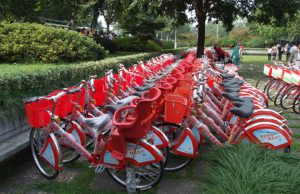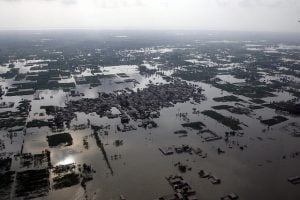China’s new leadership has asked government officials to travel simply and, in normal circumstances, not to close roads to ease their journeys. In a recent visit to the Qianhai area of Shenzhen, south China, incoming president Xi Jinping made sure to follow the new rules.
As a researcher of urban transportation planning and management, with much experience of Beijing’s congestion, I hope this change spells an opportunity to improve urban transport. But I also worry that when officials stop closing roads and experience congestion for themselves, they will shift their focus from public and green transport to tackling traffic so as to make life easier for car drivers.
Read also: Chinese cities "feel loss of streetlife and community"
I have helped to draft transportation policy for many cities, and read the plans for many more. In the overall strategy documents, the development of public transport and green transport – cycling and walking – is given priority. But it’s another story when you look at what happens on the ground. Transport investment is skewed towards expanding roads, building flyovers and intelligent traffic management systems – all designed to cut congestion.
Investment in public and green transport is rarely more than 20% of the total (excluding the cost of light rail). Many cities have specific offices working to reduce congestion, while responsibility for public transport is spread across various departments or even handed over to external companies. It is common for experts in the field to talk up to the need for greener transport but, again, when it comes to formulating actual plans the conversation immediately turns to whether or not the roads are wide enough, and whether or not they will get congested.
The inevitable result is a vicious circle in which measures taken to reduce congestion only encourage the purchase of private vehicles, which in turn increases congestion.
Public transport still can’t compete with cars
The cause of the problem is simple: the vast majority of China’s urban decision-makers, including key technical staff, drive cars. Their own experiences push them to focus on cutting congestion while overlooking public transport.
I once asked some urban transport managers why traffic police give priority to private cars, rather than buses and pedestrians. The answer was disappointing: any senior politician encountering congestion will immediately call the traffic police chiefs. Promotions and evaluations for the traffic police depend on ensuring smooth passage for politicians. And, in meetings on transportation policy, free-moving traffic is always the main concern.
Although, in theory, public transport is the priority, in practice it cannot compete with the private car. Public and green transport services decline as a result, encouraging yet more people to drive.
In fact, there is no way to treat the congestion caused by private vehicles. In China – or anywhere else – investment in infrastructure and technology designed to relieve congestion has only encouraged car use. And as urban populations continue to rise rapidly, it is impossible for infrastructure to keep up, meaning the jams get worse. Even the global cities with good track records on transportation policy suffer from congestion. The difference is that those cities have good public transport. They still get traffic jams, but as the majority of travellers take greener public transport, the congestion is more a headache for the minority than a blight on the entire city.
Prioritising bikes and pedestrians over cars
Solving this problem in Chinese cities will require policymakers and planners to abandon car-centred thinking. A well-known case study is Copenhagen. The Danish capital was also once plagued by congestion. But since the 1970s, the city has put aside car-centric views in favour of green transportation, through zoning, planning, public transport development and pedestrian and cycling systems.
The number of journeys made by bicycle has risen from less than 10% to 37% of total journeys, while those made by car account for about 20%. Even though the city’s per-capita GDP is eight to 10 times that of large Chinese cities, a far higher percentage of journeys are made by public transport.
At the core of this success is a completely new approach to urban planning. Traffic lights are programmed for bicycles, rather than cars, to ensure their smooth passage. Pipes and cables are laid under car lanes, rather than bike lanes and pavements as in China, meaning road works only affect cars. On a snowy day, bicycle lanes and pavements are swept first, before car lanes. All of this has helped Copenhagen earn plaudits as Europe’s most sustainable city.
I hope that once the police have stopped closing roads to allow politicians easier journeys, those officials don’t aim their frustration narrowly at congestion, but instead take a broader view and consider the role of public transport. It would be better still if they could regularly – rather than just once – take public transport themselves. A shift of focus away from reducing congestion to providing quality public and green transport would be a boon for China’s cities, and demonstrate the new leadership’s concern for the daily lives of the people.




